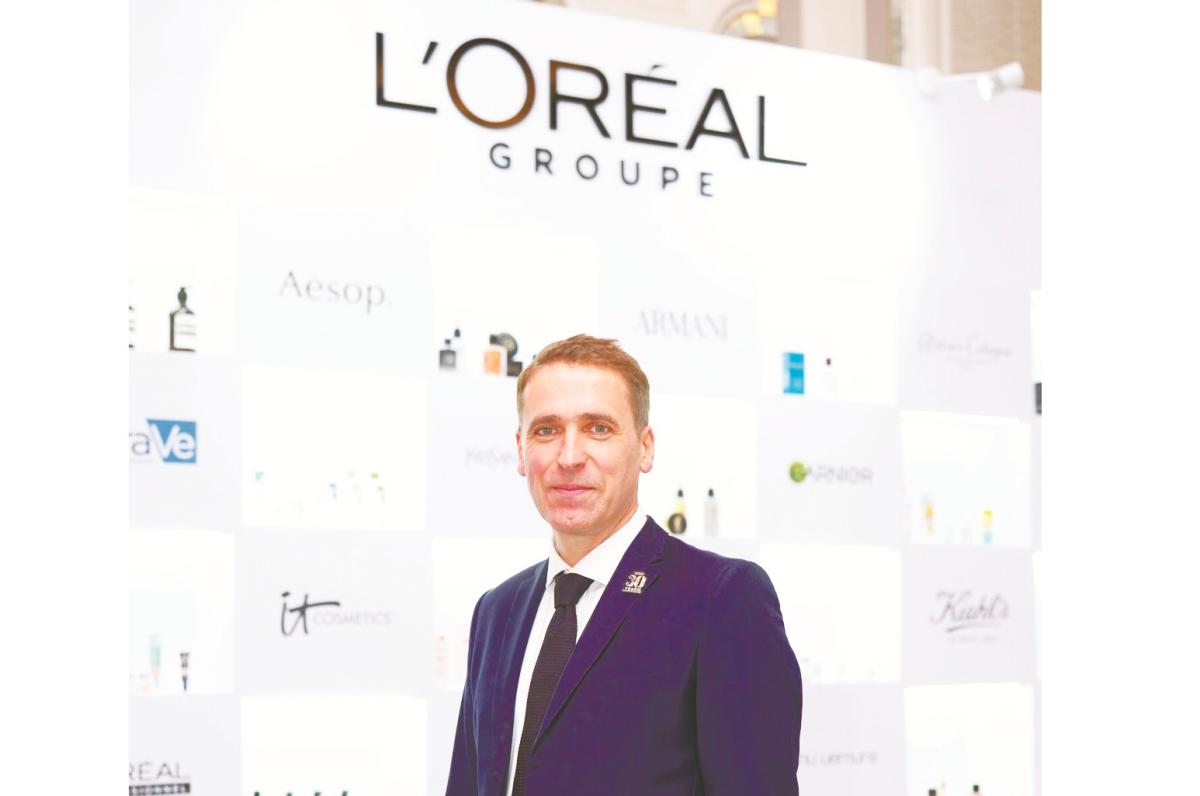KUALA LUMPUR: As L’Oreal Malaysia celebrates 30 years in the country, managing director Tomas Hruska said the beauty giant is shifting its playbook to capture Malaysia’s fast-growing young and digital-first consumer base while deepening its social and sustainability footprint.
“We have been the company driving the growth of the beauty market, bringing innovations to consumers and democratising access across all price points. But what gives us pride is going beyond business, supporting communities, championing sustainability and embedding long-term impact,” Hruska told SunBiz after the launch of the company’s socio-economic impact report recently.
Malaysia’s beauty industry, which is worth RM13.6 billion, is one of the most dynamic in Southeast Asia and Hruska believes its future is increasingly digital.
“Ten years ago we were advertising on TV, newspapers and radio. Today, most of our investment goes to social media and digital platforms because that’s where consumers are,” he said.
Platforms such as TikTok, Instagram and Shopee have become vital not just for product promotion, but for building brand engagement, particularly among younger Malaysians.
Hruska noted that the lines between online and offline shopping are blurring. “We call it ‘O plus O’, offline plus online. Some people discover a product in-store and repurchase online; others first see it online and then buy in-store. Our role is to make that ecosystem seamless,” he said.
To support this shift, L’Oreal Malaysia has invested in building new in-house capabilities, from social media advocacy to affiliate management. It also collaborates closely with retail partners such as Watsons and Guardian to integrate physical and digital shopping experiences.
Innovation, both in science and consumer experience, remains the group’s competitive edge. Hruska cited the company’s latest molecule, Melasil, developed over 18 years of research, which targets hyperpigmentation and dark spots. The technology has been rolled out under La Roche-Posay and L’Oreal Paris.
“Product innovation is at the heart of our business. But alongside this, we also bring beauty tech tools such as SpotScan, which helps consumers diagnose acne issues and build a skincare routine. Very often, we combine product innovation with tech and experiential retail, whether through mall podiums or livestream events,” he said.
The company is also tapping into “entertainment innovation”, blending beauty launches with immersive consumer experiences both online and offline. “It’s not just about selling a product. It’s about creating an engaging journey that educates, entertains and builds trust,” Hruska said.
With 30 brands in Malaysia, L’Oreal caters to a spectrum of consumers, from mass-market names such as Maybelline and Garnier to luxury labels such as Lancome and YSL Beauty. Hruska said each brand plays a distinct role, aligned with different aspirations and purchasing power.
“You cannot meet diverse beauty needs with one single brand. For some, YSL is an aspirational entry point into couture. For others, Japanese or Korean brands like Takami and 3CE resonate more. Every brand has its place,” he said.
Hruska underscored that sustainability remains a central pillar. The company has reduced plastic usage by shifting towards recycled materials, runs school campaigns on recycling through its Garnier brand, and works with the Malaysian Recycling Alliance to shape environmental policies, including on Extended Producer Responsibility.
“Being the largest beauty company, it is our responsibility to lead this change. It’s not only about products, but about educating consumers and working with the government to shape the right policies,” he said.
On social programmes, L’Oreal aims to scale its “Beauty for a Better Life” initiative, a vocational training programme for women, to reach 5,000 beneficiaries. Other initiatives include support for women in science and skills development for salon professionals.
While L’Oreal does not disclose its exact market share in Malaysia, Hruska confirmed the company is the market leader but still sees “a lot of room to grow”.
“The KPI (key performance indicator) I value most is not just market share, but how many Malaysians use our products daily. Today, we reach 6.7 million consumers. My ambition is to get to 10 million as quickly as possible,” he said.
As Malaysia’s young population drives demand, Hruska believes the next decade will be defined by digitalisation, innovation and purpose-led growth.









